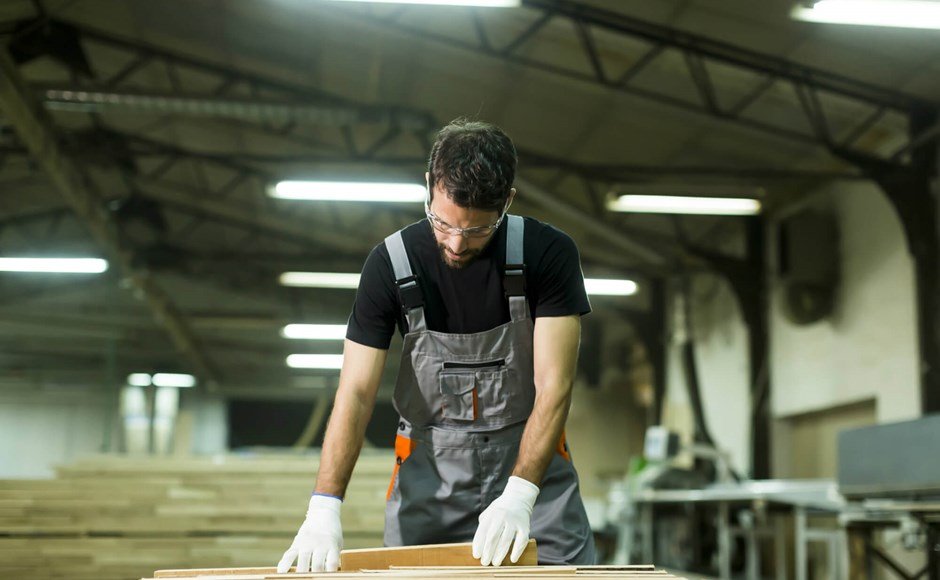Traditionally, personal protective equipment (PPE) has referred to the items that protect a worker’s physical body helmets, goggles, steel-toed boots, harnesses. But you might not realize that one of the most important pieces of PPE your team can adopt is a mobile phone.
A mobile phone is a key piece of equipment for workers in the field. Not only can it keep field teams safer, but it can help them react more effectively when an emergency arises.

Front-Line Safety
Ideally, your team will never encounter an emergency, but for that to happen, you need to have some great safety processes in place.
Is having your workers wait around for someone to come record a safety hazard and fill out forms in triplicate and then have them authorized by an on-site manager the most efficient approach to safety and compliance?
Not even close.
With mobile technology, workers can report and record safety hazards themselves. That sense of responsibility translates into a more mindful approach to safety. If they know they can report safety issues without having all the extra hassle, they’ll be on the lookout for things they should report, instead of being tempted to turn a blind eye to something that looks unsafe.
Convenient, High-Quality Data Collection
Mobile devices allow hands-free data collection. That is especially important when working in inclement weather or both hands need to be free to perform a task. Voice-to-text is the best example of this, and most mobile platforms make use of it.
The cameras on mobile phones enable your team to collect higher quality data. When documenting issues on the field, uploading images alongside the written report can make a big difference. When ordering repairs, for example, photos allow those in charge of repairing equipment to know how to prepare well ahead of time. By assessing the photo before heading out, they’re less likely to have to head back mid-repair to gather extra equipment they didn’t anticipate needing or be surprised by the need for additional repairs or inspections
Your Pocket Safety Expert
If a situation is not completely safe, one of the biggest perks to a mobile device in the field is having immediate access to “what now?” information.
Many industries struggle to hire and retain talent, which means that jobs will often have to be done by new employees who are not yet up to speed on the safety and reporting processes. With a mobile device, these employees have access to the same information a veteran in the field would know off-hand. Searching through a user-friendly database is far better than relying on the off chance that the technicians will have the right handbook on them when they need it. Besides, the ease of retrieval makes this a quicker option than flipping through a handbook, which can make all the difference when it comes to time-sensitive situations.
Breaking Down Language Barriers
Though you strive to be compliant and ensure a situation is safe, it is often necessary during inspections to follow certain regulations based upon the region. That may also affect the language your people are fluent in. If they can’t understand the language on the forms, you can’t expect them to know when they’re in danger.
Mobile devices offer not only multi-lingual support, but multi-regional services as well. Since digital forms support real-time customization based on location, keeping technicians safe in any language and any site is made that much easier (for related reading, see Overcome-language barriers in safety-training/).
Emergency Information
If despite all best intentions and best practices, a technician is hurt in the field, access to that person’s emergency information – allergies, pre-existing conditions, and so on – is invaluable, especially if an ambulance needs to be called.
Many mobile phones feature a medical ID card that users can fill out in case of emergency, including medical conditions, medications, allergies, and emergency contacts. Having this information with field technicians, rather than having to find that person’s file and send it separately to the hospital, ensures that they get the right care, right away.
When an incident occurs on-site, another key piece of information is the injured person’s emergency contacts. Whether contacting these people is a formality or something that requires immediate action, having the right information on file is key.
Mobile phones provide field technicians access to the most up-to-date contacts in the field, so key stakeholders are always in the know when they need to be, and technicians are never left scrambling through binders to find the latest scribbled contact.
Advanced Record-Keeping
Once an accident has occurred, a lot of things will happen. One event you can count on is a visit from OSHA to ensure everything was done to prevent an accident.
That’s where digital records come in. Mobile forms provide teams with the means to collect data and file forms in the cloud, all organized so they can be easily retrieved when regulators and auditors come calling.
Plus, with mobile devices comes GPS mapping capabilities, enabling you to show, without a doubt, when and where inspections were performed.
( See:incident-report safety app)
The New PPE
The way we think about PPE today is all about reactions: we wear steel-toed boots and helmets in case an object is dropped, we wear safety goggles in case of debris, and we wear harnesses in case we fall.
But PPE should go farther than that. And with mobile devices, it can.
Personal protective equipment should ensure the user’s safety before, during, and after the danger has passed. If it doesn’t, it’s not really keeping you safe; it’s just minimizing the damage.




